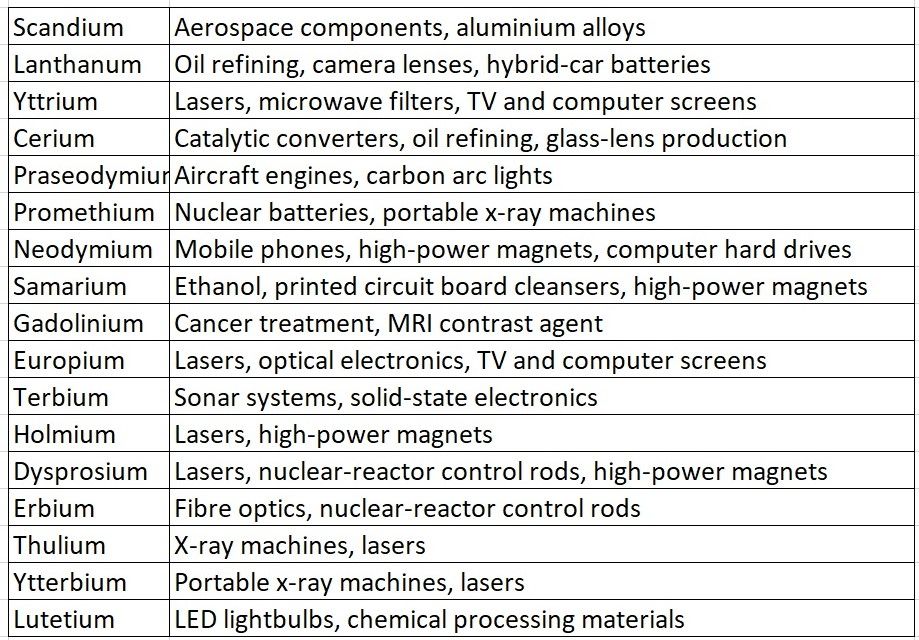Today, the coronavirus pandemic, following so closely on the heels of the still ongoing US/China trade war, has made raw material buyers the world over reconsider the stability of their supply chains.
So, how would markets respond if the trade war escalated or if future waves of COVID proved to be even more disruptive than the first?
In the short-term, experts believe that Western markets would be able to survive on inventory stockpiles, although that may mean governments prioritising some supplies for essential needs of national security and defence. Less important manufacturing, such as for domestic electronics, golf bags, flares, and colour glazes for ceramics, would have to either pay more or find alternative ingredients.
For example, during the 2010 supply scare, high prices persuaded glassmakers to stop using cerium for polishing, while the oil industry found an alternative approach to using lanthanum in the oil refining process.

Consequently, analysts such as Eugene Gholz, an associate professor of political science at the University of Notre Dame and the Pentagon's 2010 to 2012 Deputy Assistant Secretary of Defense for Manufacturing and Industrial Base Policy, believes that supplies for rare earth elements would survive a Chinese embargo. “I don't think there is an obvious supply gap or hole where someone will not be able to get a Prius or Tesla or whatever they're looking at.” he says.
To find out more about the expected changes in the rare earth element markets, read; How the Coronavirus is Forcing a Rethink of Rare Earth Element Supplies
In the longer term, analysts generally predict that the market would respond to maintain supplies.
As the journal Scientific American reports, “ In the event of a longer Chinese supply interruption, the U.S. rare earths mine at Mountain Pass, Calif., would likely become the first place to step up production. … The mine's previous owner, Molycorp, spent approximately $1.5 billion building a new separation facility for producing rare earth concentrates. It did not, however, complete the downstream processing needed to produce purified rare earth materials before the company went bankrupt in 2015 because of Chinese competition. The mine's new owner, MP Materials, plans to reactivate and complete the mothballed facility for fresh operation …”
Similar investments and projects would likely also begin in other countries. For example, the EU has already labelled rare earth elements as ‘essential raw materials’ and established the European Rare Earths Competency Network (ERECON) to “improve access to these metals, reduce their consumption and improve extraction conditions in Europe.”
So how feasible is an expansion of rare earth element extraction and processing in the West?
Well, like all businesses, supplying rare earths comes down to the economics.
As Pol Le Roux, vice-president of sales and marketing at Lynas (the largest supplier of rare earth elements outside of China), explained in a recent interview with the commodities news service Argus Media, “… magnets [from Western suppliers] would cost slightly more. But from the perspective of an automotive producer the cost per car is much smaller than the cost of the catalytic converter to reduce emissions and much smaller than the cost of a battery in an electric car. If you track it back to the price of the rare earth in the magnet and look at the impact of a price increase there — a $10/kg increase in the price of NdPr to $45/kg from $35/kg, where it is today, and a $100/kg increase for dysprosium oxide to $350/kg from $250/kg would according to my estimates be enough to bring on all the rare earth supply you would need. That price rise would increase the cost of magnets by around $7/kg, or around $15/kg per electric car, with 2kg of magnet per electric car.”

So, if car manufacturers are willing to pay an extra $15 or so for each electric car, then investors would be willing to build facilities outside of China. But without government support and a guarantee from the automobile industry to pay a premium for more stable and localised sources, then the investment will not happen.
$15 a car might be small change for a car company, but, as Le Roux adds, “For a magnet maker, $5/kg can be the difference between living and dying.”
But money aside, with so few sources for rare earth elements, manufacturers and governments are beginning to think again about their dependency on China for so many finished products and raw materials.
Correcting the imbalance will take time. For while the estimated 99 million tonnes of rare earth elements are accessible all over the Earth’s crust, constructing processing facilities does not happen overnight. As Le Roux notes, “the investment downstream is really more a matter of technology and time than capital.”
‘Diversity of supply’ and ‘reshoring’ have become the buzzwords of the ‘new normal’. So, if the political will is present, and if chemical executives value stability strongly enough, then raw material suppliers might expect changes to rare earth element markets to happen in the not too distant future.
Photo credit: Pexels, Andy Bay from Pixabay,